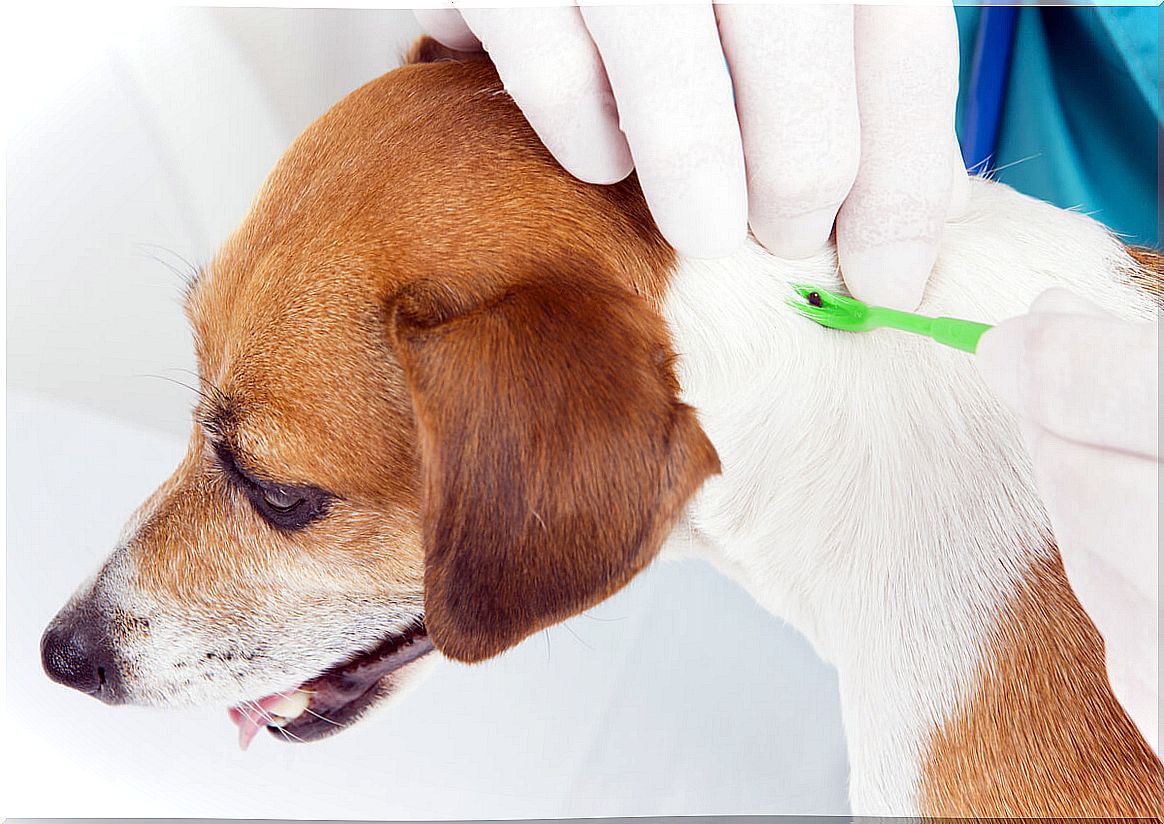How To Treat Dog Bites?

As spring and summer approach, guardians fear that insects will cause bites in dogs. This is because during these seasons of the year, various invertebrates are more active than ever.
Admittedly, the risk of dogs or other animals being bitten is possible. Therefore, it is useful to know how to deal with this event when it happens.
How to act against bites in dogs?
Dogs are extremely curious, which means that they sometimes face unforeseen situations. One of these situations can be an encounter with an insect.
The insects will not understand the curiosity of the dog and if they feel threatened, they will attack. This will end up causing the dog to appear with the area of the bite swollen and scratching without stopping.
When this happens, first of all, keep calm but be alert. Normally, these types of experiences are a scare, but it is always convenient to keep an eye on the dog in case there are complications.

What insects can cause the bite?
The first invertebrates that come to mind may be wasps and bees. However, they are not the only insects that dogs can face. Other insects that cause bites in dogs can be flies and mosquitoes. On the other hand, they can also be faced with spiders.
There are more dangerous candidates, such as fleas or ticks. The bites of these two insects are dangerous because they can complicate the symptoms.
The bite of fleas is characterized by causing a slight swelling of the area and itching. If the dog is allergic to your bite, the itching can be so intense that it causes complications, such as skin infections.
On the other hand, ticks are transmitting vectors of different diseases such as Lyme disease . It is not the swelling of the bite that should be of concern, but the possible transmission of disease.
How to treat dog bites
At the moment in which it is observed that the dog has received a bite (and this is not serious), the following tips can be followed.
Ice to combat swelling
It will not be easy to apply ice wrapped in a handkerchief to the dog that has received the bite. However, this technique is one of the most used to combat itching.
This is because thanks to the application of cold, the area will be decongested. In this way, the itching will be controlled and the dog calms down.
Wash with soap and water
One of the risks of bites is that the area becomes infected. Therefore, it is advisable to wash the area with soap and water. You must apply plenty of soap and water in the area of the bite. It is also essential to be careful to remove all soap from the area.
Watch the dog
You have to be attentive to the dog, in case it could manifest different symptoms that indicate complications. If the dog worsens, a visit to the vet becomes mandatory.
Although an insect bite usually causes only mild swelling and itching, this is not always the case. In some cases, the itchiness can get worse and last for weeks.
In the worst case, the animal can suffer anaphylactic shock , that is, a very severe reaction to the sting. Before anaphylaxis, attention must be immediate to apply an effective treatment.
Symptoms of anaphylaxis in dogs that can put on warning are from vomiting or diarrhea, through hives and excessive itching to breathing difficulties. Other symptoms can be unconsciousness or lethargy as well as the opposite effect, hyperactivity accompanied by tachycardia.
How to identify the severity of dog bites?
Stings do not usually cause complications in dogs, but there is always some risk. Among the risk factors is the place of the bite, as it is not the same that it is on a leg than the throat or inside the mouth.
If the insect has bitten the animal in the throat or inside the mouth, it is a serious situation. Only a veterinarian knows how to act correctly in these cases, since if the insect has injected poison it can cause allergic reactions.
In addition, if the dog is allergic to the bite of a specific insect, it is necessary to have an emergency kit. In it, there will be an injection to combat the allergic reaction, but even so, the dog must be taken to the vet to assess the situation.
Another important risk is the number of bites that the dog can receive. The higher this number, the more complicated the symptoms and treatment will be.

In short, you have to be attentive if the dog receives a bite, monitoring the symptoms that it manifests. In addition, you should never resort to home remedies that can complicate the situation.
The advice and attention of a veterinarian in these cases is essential to avoid complications. Therefore, always go to an expert who knows how to deal with the situation, since each animal can react differently.









